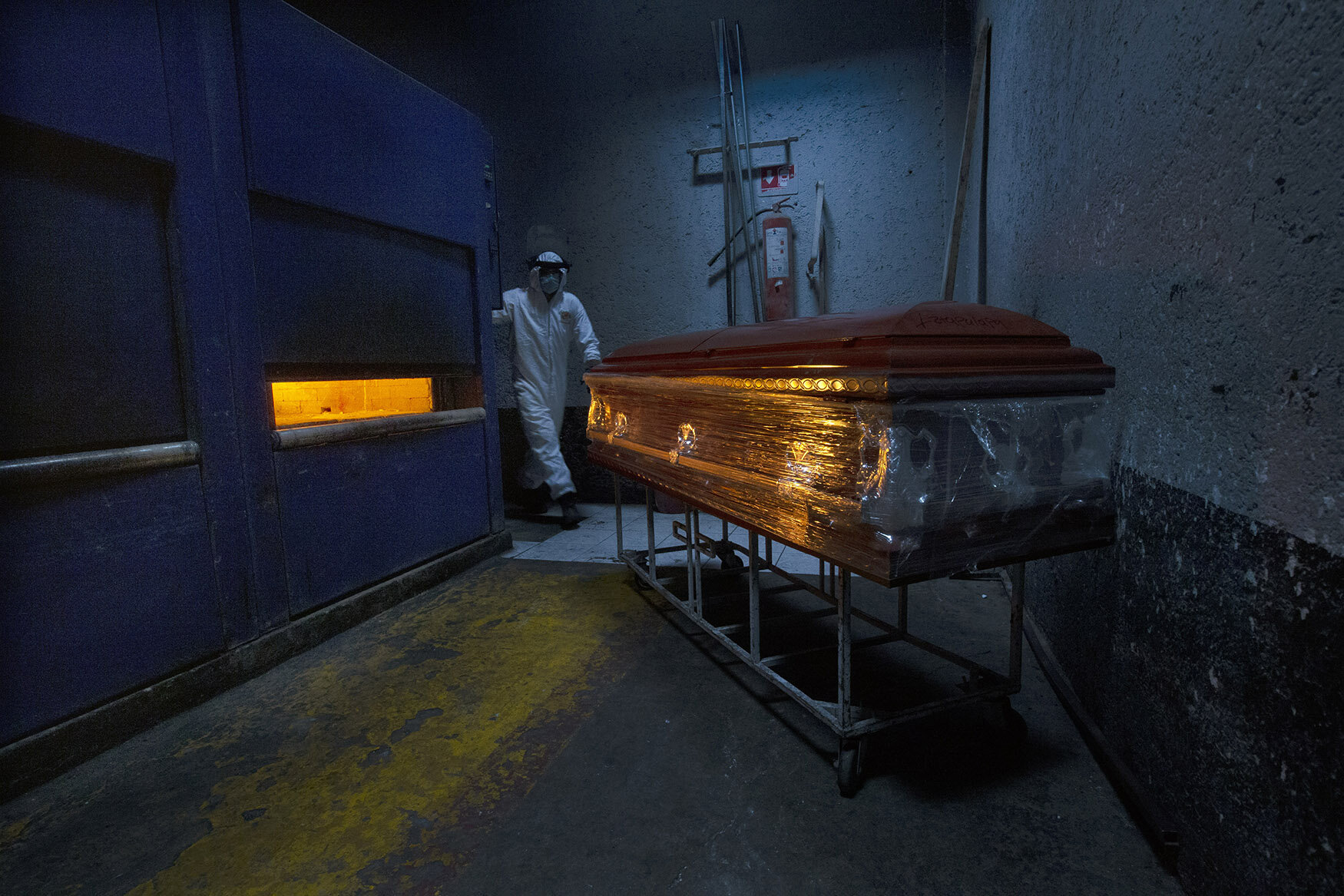Mexico City floating farms, chefs team up to save tradition

At dawn in Xochimilco, home to Mexico City’s famed floating gardens, farmers in muddied rain boots squat among rows of beets as a group of chefs arrive to sample sweet fennel and the pungent herb known as epazote.
By dinnertime some of those greens will be on plates at an elegant bistro 12 miles (20 kilometers) to the north, stewed with black beans in a $60 prix-fixe menu for well-heeled diners.
Call it floating-farm-to-table: A growing number of the capital’s most in-demand restaurants are incorporating produce grown at the gardens, or chinampas, using ancient cultivation techniques pioneered hundreds of years ago in the pre-Columbian era.
In this July 13, 2017 photo, chefs and restaurant employees walk through a vegetable garden on a floating farm known as a "chinampa" in Xochimilco, Mexico City. (AP Photo/Marco Ugarte)
While sourcing local ingredients has become fashionable for many top chefs around the globe, it takes on additional significance in Xochimilco (so-chee-MIL-co), where a project linking chinampa farmers with high-end eateries aims to breathe life and a bit of modernity into a fading and threatened tradition.
“People sometimes think (farm-to-table) is a trend,” said Eduardo Garcia, owner and head chef of Maximo Bistrot in the stylish Roma Norte district. “It’s not a trend. It’s something that we humans have always done and we need to keep doing it, we need to return to it.”
Xochimilco, on the far southern edge of Mexico City, is best-known as the “Mexican Venice” for its canals and brightly colored boats where locals and tourists can while away a weekend day listening to mariachi music and sipping cold beers.
In this July 13, 2017 photo, chef Eduardo Garcia, founder of Maximo Bistrot and former migrant worker in the US, cuts mushrooms at his restaurant in Mexico City. (AP Photo/Marco Ugarte)
In this July 13, 2017 photo, Gerardo Cristobal navigates his boat as he ferries farmers and laborers to their floating farms called "chinampas" in Xochimilco, Mexico City. (AP Photo/Marco Ugarte)
It has also been a breadbasket for the Valley of Mexico since before the Aztec Empire, when farmers first created the “floating” islands bound to the shallow canal beds through layers of sediment and willow roots.
There’s nothing quite like it anywhere else in the world, and Xochimilco is designated by UNESCO as a World Heritage site.
But that World Heritage status and Xochimilco itself are threatened by the pollution and encroaching urbanization that plague the rest of the sprawling metropolis.
Enter Yolcan, a business that specializes in placing traditionally farmed Xochimilco produce in Mexico City’s most acclaimed restaurants Those include places like Gabriela Camara’s seafood joint Contramar and Enrique Olvera’s Pujol, which is perhaps the country’s most famous restaurant and regularly makes lists of the world’s best.
Yolcan has been around since 2001, but it’s only in the last year that business has really taken off with the number of restaurant partners increasing by a third during that period to 22. Last month five of them teamed up with Yolcan for dinner to benefit chinampa preservation.
The company directly manages about its own farmland and also partners with local families to help distribute their goods, lending a much-needed hand as an intermediary.
In this July 13, 2017 photo, farmer Lucio Usobiaga, founding partner of Yolcan, points to a vegetable field as he talk to chefs and restaurant employees on a floating farm known as a "chinampa" in Xochimilco, Mexico City. (AP Photo/Marco Ugarte)
“The thing about the chinampa farmer is that he does not have the time to track down a market or a person to promote his product,” said David Jimenez, who works a plot in the San Gregorio area of Xochimilco. “Working the chinampas is very demanding.”
All told Yolcan’s operation covers about 15 acres (6 hectares) and churns out some 2.5 tons of produce per month. Due to the high salinity of the soil drawn from canal beds, the straw-covered chinampa plots are particularly fertile ground for root vegetables and hearty greens like kale and chard.
Diners reserve weeks in advance for a coveted table at Maximo Bistrot, one of three restaurants Garcia runs. Meticulously prepared plates of chinampa-grown roasted yellow carrots with asparagus puree arrive at the table, accompanied by sea bass with green mole sauce and wine pairings in tall glasses.
Garcia estimated he gets about two-thirds of his ingredients from Yolcan or other organic farms nearby. He was born in a rural part of Guanajuato state where his family raised corn and largely ate what they grew, so sourcing local is second-nature.
“I think all of the world’s restaurants should make it a goal to use these alternative ingredients,” Garcia said, stirring a pot of beans flavored with the aromatic epazote herb. “Even though it’s a little more expensive, a little more difficult to find.”
This July 14, 2017 photo shows a plate garnished with chinampa-grown roasted yellow carrots with asparagus puree, prepared by chef Eduardo Garcia, founder of Maximo Bistrot and a former U.S. migrant worker, at his restaurant in Mexico City. (AP Photo/Marco Ugarte)
Chinampa produce generally sells for 15 to 100 percent more than comparable goods at the enormous Central de Abasto, the go-to wholesale market for nearly all of Mexico City’s chefs that is so monolithic its competition sets prices across the country.
But chefs who buy from Yolcan are happy to pay a premium knowing they’re getting vegetables free of chemical fertilizers or pesticides and also supporting a centuries-old tradition.
Diners at Maximo Bistrot also said they enjoyed their meal, especially the burrata with chinampa-grown heirloom tomatoes. One couple said they are willing to pay the prices of these high-end eateries in order to have the best produce.
“We’ve eaten in 26 countries around the world, and for the price and quality, this was awesome,” said Kristin Kearin, a 35-year-old masseuse from United States. “I honestly think that using small producers is going to come back.”
In this July 13, 2017 photo, a farmer takes advantage of a motorized boat to move faster along the channels of Xochimilco to his floating farm known as a "chinampa" in Mexico City. (AP Photo/Marco Ugarte)
In this July 13, 2017 photo, a kitchen staff worker cooks onions and beans with "epazote" herbs at the Maximo Bistrot restaurant in Mexico City. (AP Photo/Marco Ugarte)
In this July 13, 2017, a farmer moves his harvest of squash flowers through the channels of Xochimilco in Mexico City. (AP Photo/Marco Ugarte)
In this July 13, 2017 photo, a farmer paddles his canoe to his floating farm known as a "chinampa," in Xochimilco, Mexico City. (AP Photo/Marco Ugarte)
In this July 13, 2017 photo, a variety of lettuce grows on a floating farm known as a "chinampa" in Xochimilco, Mexico City. (AP Photo/Marco Ugarte)
In this July 13, 2017 photo, Ichiro Kitazawa, a chef at the Japanese restaurant Rocoi, inspects herbs on a floating garden known as a "chinampa" in Xochimilco in Mexico City. (AP Photo/Marco Ugarte)
In this July 13, 2017 photo, a farmer's machete and hat sit on a floating farm known as a "chinampa" in Xochimilco, Mexico City. (AP Photo/Marco Ugarte)
In this July 13, 2017 photo, men remove mud from a shallow channel so that tourist boats will be able to move through the channel, in Xochimilco, Mexico City. (AP Photo/Marco Ugarte)
In this July 13, 2017 photo, a heron perches on a boat tied to a floating farm known as a "chinampa" in Xochimilco, Mexico City. (AP Photo/Marco Ugarte)
In this July 13, 2017 photo, lettuce grows on a floating farm known as a "chinampa" in Xochimilco, Mexico City. (AP Photo/Marco Ugarte)
In this July 13, 2017 photo, chef Eduardo Garcia, founder of Maximo Bistrot and former migrant worker in the U.S., cuts mushrooms at his restaurant in Mexico City. (AP Photo/Marco Ugarte)
In this June 27, 2017 photo, birds skim the channels of Xochimilco in Mexico City. (AP Photo/Marco Ugarte)
Text from the AP news story, Mexico City floating farms, chefs team up to save tradition by Lisa Martine Jenkins.
Photos by Marco Ugarte
Follow AP photographers on Twitter
Written content on this site is not created by the editorial department of AP, unless otherwise noted.





